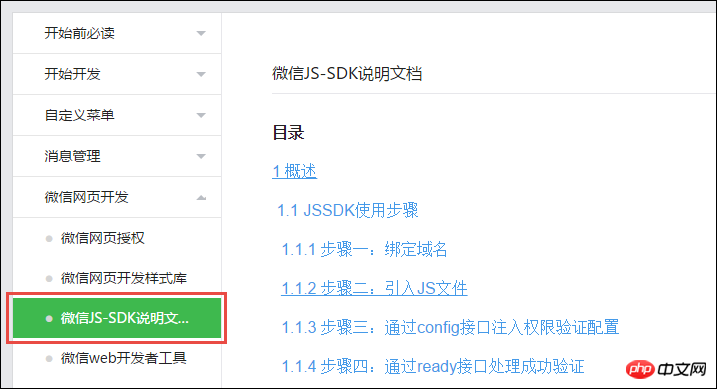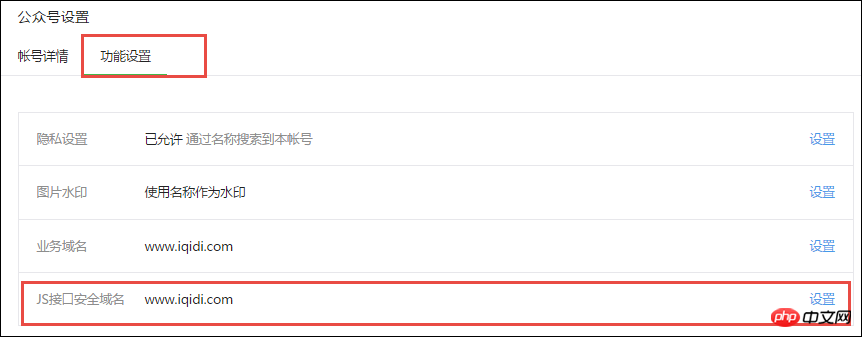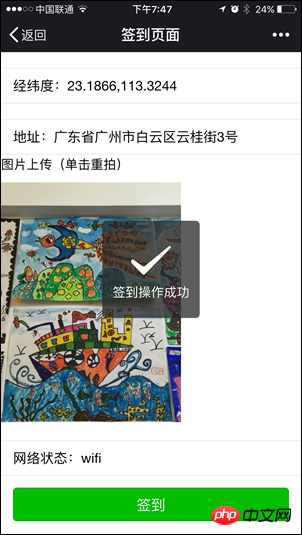
This article describes the introduction of C# development of WeChat portals and applications using WeChat JSSDK to implement the check-in function
As WeChat gradually opens more JSSDK interfaces, we can use custom web pages ways to call more WeChat interfaces to achieve our richer interface functions and effects. For example, we can call various mobile phone hardware on the page to obtain information, such as camera photography, GPS information, scanning QR codes, etc. This book This article introduces how to use these JSSDK interfaces to implement the check-in function, where check-in requires reporting geographical coordinates and addresses, calling the camera to take pictures in real time, and obtaining relevant information about the current user, etc.
1. Description of JSSDK
WeChat JS-SDK is a web development toolkit based on WeChat provided by WeChat public platform for web developers. By using WeChat JS-SDK, web developers can use WeChat to efficiently use the capabilities of mobile phone systems such as taking pictures, selecting pictures, voice, and location. At the same time, they can directly use WeChat's unique capabilities such as sharing, scanning, coupons, and payment. , providing WeChat users with a better web experience.
The interface categories currently supported by JSSDK include the following categories: basic interface, sharing interface, image interface, audio interface, intelligent interface, device information, geographical location, shake peripherals, interface operation, WeChat scan , WeChat store, WeChat coupons, WeChat payment, with the integration of all WeChat functions, it is estimated that more interfaces will be opened one after another.
Enter the [Developer Documentation] module in the WeChat backend, and we can see the functional classification and introduction of the corresponding JSSDK, as shown below.

From the right side, we can see the usage instructions of each interface in detail. Basically, the usage methods of JSSDK are similar, so you can pass the debugging and master one or two of them, and the others Just follow the instructions and follow them.
1) Steps to use JSSDK
Step 1: Bind domain name
First log in to the WeChat public platform and enter the "Function Settings" of "Official Account Settings" to fill in the "JS Interface" "Secure Domain Name". As shown below, set it up on the public platform.

#Note: After logging in, you can view the corresponding interface permissions in the "Developer Center".
Step 2: Introduce JS files
Introduce the following JS files on the page that needs to call the JS interface (https is supported): http://res.wx.qq .com/open/js/jweixin-1.0.0.js
If you need to use the shake peripheral function, please introduce http://res.wx.qq.com/open/js/jweixin-1.1 .0.js
Note: Supports loading using AMD/CMD standard module loading method
Of course, we generally edit the page. In order to facilitate more effects, other JS may be introduced. Such as JQuery class library and so on. In addition, we can also implement richer functions based on WeUI's jquery-weui class library. The following is the JS reference in our case code.
Step 3: Inject permission verification configuration through the config interface
All pages that need to use JS-SDK must first inject configuration information, otherwise it will not be called (the same URL only needs to be called once, The web app of the SPA that changes the URL can be called every time the URL changes. Currently, the Android WeChat client does not support the new H5 feature of pushState, so using pushState to implement the web app page will cause the signature to fail. This problem will occur in Android 6 .2).
wx.config({ debug: true, // 开启调试模式,调用的所有api的返回值会在客户端alert出来,若要查看传入的参数,可以在pc端打开,参数信息会通过log打出,仅在pc端时才会打印。 appId: '', // 必填,公众号的唯一标识 timestamp: , // 必填,生成签名的时间戳 nonceStr: '', // 必填,生成签名的随机串 signature: '',// 必填,签名,见附录1 jsApiList: [] // 必填,需要使用的JS接口列表,所有JS接口列表见附录2 });
The above configuration is the core of JSSDK. It needs to configure the corresponding appid, timestamp, and nonceStr. There is nothing special about it. The most noteworthy thing is the implementation mechanism of signature, so that we can do it in the background. Just generate the corresponding value and assign it to the JS page. This is also the safest approach.
The following code is the HTML code in the Asp.net view page in our actual project, as shown below.
其中的chooseImage()是我们在页面开始的时候,让用户拍照的操作,具体JS代码如下所示。
//拍照显示 var localIds; function chooseImage() { wx.chooseImage({ count: 1, // 默认9 sizeType: ['original', 'compressed'], // 可以指定是原图还是压缩图,默认二者都有 sourceType: ['camera'], // 可以指定来源是相册还是相机,默认二者都有 success: function (res) { localIds = res.localIds; // 返回选定照片的本地ID列表,localId可以作为img标签的src属性显示图片 $("#imgUpload").attr("src", localIds); } }); }
但用户使用摄像头拍照后,就会返回一个res.localIds集合,因为我们拍照一个,那么可以把它直接赋值给图片对象,让它显示当前拍照的图片。
拍照完成,我们单击【签到】应该把图片和相关的坐标等信息上传到服务器的,图片首先是保存在微信服务器的,上传图片有效期3天,可用微信多媒体接口下载图片到自己的服务器,此处获得的 serverId 即 media_id。
为了实现我们自己的业务数据,我们需要把图片集相关信息存储在自己的服务器,这样才可以实现信息的保存,最后提示【签到操作成功】,具体过程如下所示。
//上传图片 var serverId; function upload() { wx.uploadImage({ localId: localIds[0], success: function (res) { serverId = res.serverId; //提交数据到服务器 //提示信息 $.toast("签到操作成功"); }, fail: function (res) { alert(JSON.stringify(res)); } }); }
另外,我们为了实现单击图片控件,实现重新拍照的操作,以及签到的事件处理,我们对控件的单击处理进行了绑定,如下代码所示。
document.querySelector('#imgUpload').onclick = function () { chooseImage(); }; $(document).on("click", "#btnSignIn", function () { if (localIds == undefined || localIds== null) { $.toast('请先拍照', "forbidden"); return; } //调用上传图片获得媒体ID upload(); });

The above is the detailed content of Introduction to developing WeChat portals and applications using C# to implement the check-in function using WeChat JSSDK. For more information, please follow other related articles on the PHP Chinese website!
 What skills are needed to work in the PHP industry?
What skills are needed to work in the PHP industry? What does Taobao b2c mean?
What does Taobao b2c mean? WiFi is connected but there is an exclamation mark
WiFi is connected but there is an exclamation mark The role of graphics card driver
The role of graphics card driver How to solve the "NTLDR is missing" error on your computer
How to solve the "NTLDR is missing" error on your computer Data Structure and Algorithm Tutorial
Data Structure and Algorithm Tutorial html formatting method
html formatting method What is a root domain name server
What is a root domain name server



